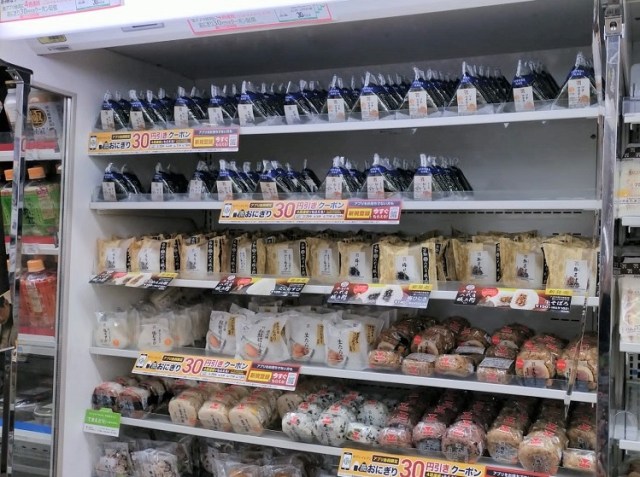
A lot of the rice balls on convenience store shelves include oil, but it’s not to make them taste better.
Among the many wonderful things at Japanese convenience stores, perhaps the most wonderful of all are the rice balls, or onigiri, as they’re called in Japanese. Tasty, reasonably priced, and relatively healthy, you’ll find convenience store onigiri with all sort of fillings, such as salmon, chicken, and plum.
But there’s one ingredient present in a lot of convenience store onigiri that even most Japanese shoppers aren’t especially conscious of: oil.
▼ 油 = oil
Specifically, it’s vegetable oil that many convenience store onigiri have. This isn’t a new development, but since it’s something a lot of people aren’t aware of, every couple of years it gets some people in a stir when someone notices/points out “oil” on a convenience store ingredient list, like in this tweet posted this week with a photo of a plain slated rice onigiri from convenience store chain Family Mart.
▼ “Make it with just rice and salt,” the poster pleads.
米と塩だけでつくってくれよ pic.twitter.com/Lqnk6vWVye
— 健康最高 (@yrzXlZARNuPcPsv) March 26, 2023
You might assume that the oil is added as a cheap but unhealthy way to make convenience store onigiri taste better, but the truth is actually more complicated, with no fewer than three reasons for the oil. The first is texture. Adding oil to the rice before it’s cooked creates a coating for the individual grains, so that even though they’re pressed together and retain their rice ball form, there’s enough space between them for a light, fluffy consistency.
“But wait, what about homemade onigiri? Those don’t have oil in them,” you might be asking. That’s true, but unlike onigiri made at home and then eaten soon after, convenience store onigiri are made at a factory, then shipped to the chain’s branches and stocked on refrigerated shelves until they’re purchased. Without oil, the passage of time and low temperature would make the rice clumpy and hard.
The second reason has to do with how convenience store onigiri are made. Rather than being pressed by hand, they’re made with a mechanical press. The oil helps prevent rice from sticking to the machinery, which keeps the shape of the onigiri nice and consistent.
And finally, the oil in convenience store onigiri is there because of how the rice balls are packaged. They have to be wrapped in something, usually plastic, and just like how the oil keeps the grains from sticking too closely to each other, it also keeps the onigiri from sticking to the inside of its packaging, so it can be removed without inadvertently tearing off a piece of the rice ball.
▼ If this onigiri was poorly formed or sticking to its package it might spill its beefy filling before you can bite into it.
All that said, not every convenience store rice ball is made with oil. It seems like the ingredient is more common with onigiri that don’t have a nori (seaweed) wrapping.
▼ This sardine and sansho spice onigiri has oil in its ingredient list…
▼ …but this salmon onigiri, with a nori wrapper, doesn’t…
▼ …and neither does this seaweed-equipped salmon onigiri.
And thankfully, even when convenience store onigiri are cooked with oil, it’s not like the rice was boiled in a 100-percent pot of the stuff. The salt onigiri from 7-Eleven pictured at the start of this article has a total of 0.9 grams of fat, and the onigiri pictured in the tweet, from rival chain Family Mart, has only slightly more fat, 1.1 grams. So even if convenience store onigiri aren’t always entirely oil-free, they’re still a pretty healthy snack choice, so the main thing to worry about is whether or not you can open the wrapper the right way.
Source: Hachima Kiko, Shukan Josei Prime
Photos ©SoraNews24
● Want to hear about SoraNews24’s latest articles as soon as they’re published? Follow us on Facebook and Twitter!
Follow Casey on Twitter, where he misses the Kaizoku Musubi rice balls from Iwakuni Station.

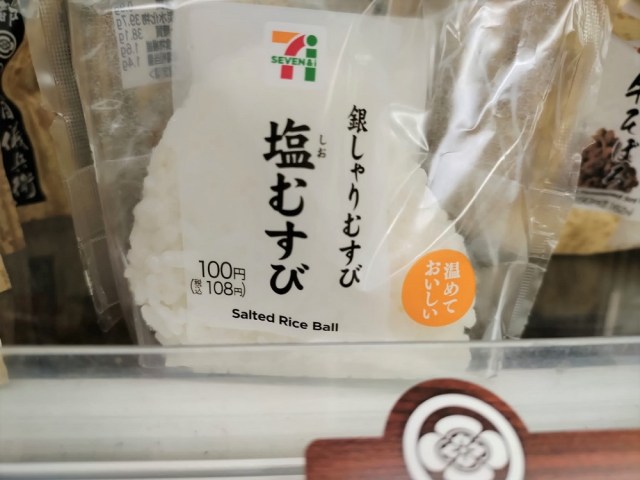
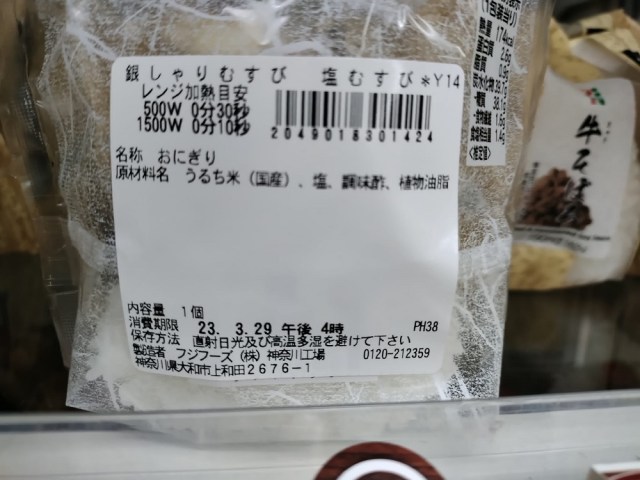
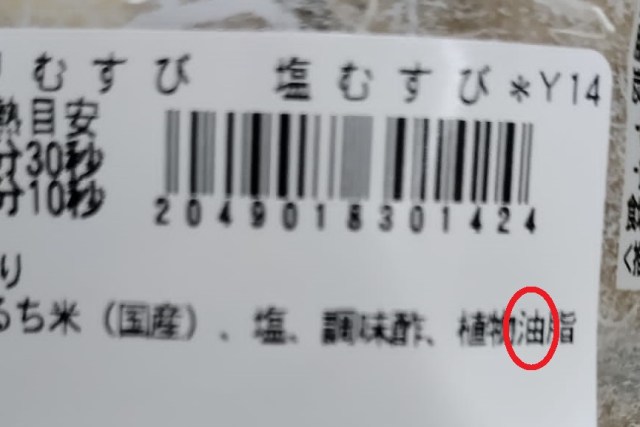
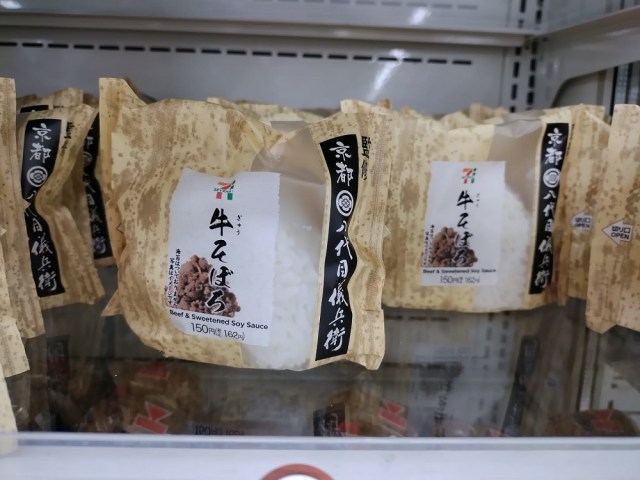
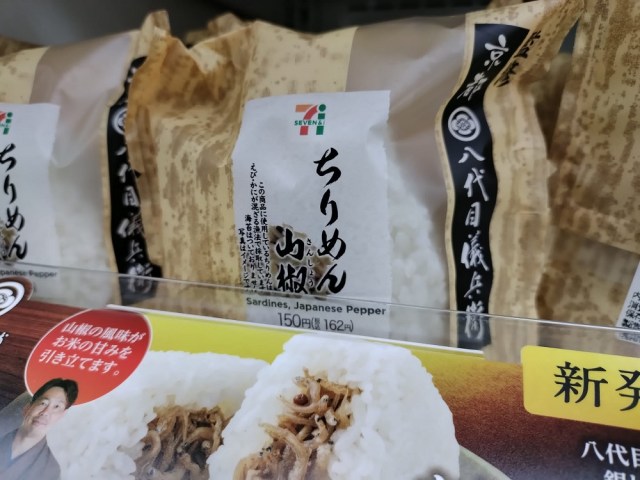
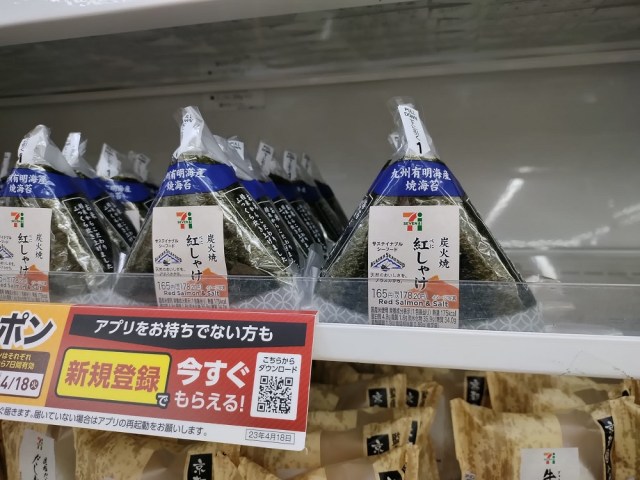
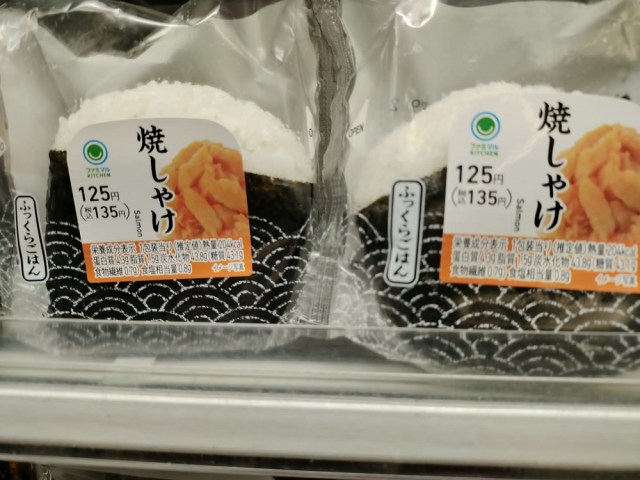
 Beyond rice balls: How to make an edible onigiri rice cat【Video】
Beyond rice balls: How to make an edible onigiri rice cat【Video】 Awesome rice ball making machine promises perfectly pressed onigiri in just 30 seconds【Video】
Awesome rice ball making machine promises perfectly pressed onigiri in just 30 seconds【Video】 Make your best-tasting onigiri taste even better with this easy recipe! 【RocketKitchen】
Make your best-tasting onigiri taste even better with this easy recipe! 【RocketKitchen】 Less than half of Japanese people OK with bare hand-pressed rice balls, survey says, but why?
Less than half of Japanese people OK with bare hand-pressed rice balls, survey says, but why? Should you warm up your convenience store onigiri rice balls in the microwave?【Taste test】
Should you warm up your convenience store onigiri rice balls in the microwave?【Taste test】 How to order snacks on a Shinkansen bullet train in Japan
How to order snacks on a Shinkansen bullet train in Japan Japan’s new difficult-to-drink-from beer glass protects your liver, but it’s a brutal experience
Japan’s new difficult-to-drink-from beer glass protects your liver, but it’s a brutal experience Burger King Japan suddenly adds Dr. Pepper and Dr. Pepper floats to its menu nationwide
Burger King Japan suddenly adds Dr. Pepper and Dr. Pepper floats to its menu nationwide Demon Slayer: Kimetsu no Yaiba gets new roller coaster attractions and food at Universal Studios Japan
Demon Slayer: Kimetsu no Yaiba gets new roller coaster attractions and food at Universal Studios Japan Hello, cosmetics! Clinique teams up with Hello Kitty this summer for first-time collaboration
Hello, cosmetics! Clinique teams up with Hello Kitty this summer for first-time collaboration Kyoto Tower mascot termination reveals dark side behind cute Japanese characters
Kyoto Tower mascot termination reveals dark side behind cute Japanese characters Nintendo history you can feel – Super NES, N64, and GameCube controllers become capsule toys
Nintendo history you can feel – Super NES, N64, and GameCube controllers become capsule toys This Nara workshop has been making deer crackers for more than 100 years and offers tours【Photos】
This Nara workshop has been making deer crackers for more than 100 years and offers tours【Photos】 High-fashion Totoro cuddle purse is like an elegant stroll in the forest【Photos】
High-fashion Totoro cuddle purse is like an elegant stroll in the forest【Photos】 Legendary Melon Bread by Tokyo Banana returns after 20-year absence【Taste Test】
Legendary Melon Bread by Tokyo Banana returns after 20-year absence【Taste Test】 “The most Delicious Cup Noodle in history” – Japan’s French Cup Noodle wins our heart【Taste test】
“The most Delicious Cup Noodle in history” – Japan’s French Cup Noodle wins our heart【Taste test】 Starbucks releases a cute Frappuccino and Unicorn Cake…but not in Japan
Starbucks releases a cute Frappuccino and Unicorn Cake…but not in Japan McDonald’s Japan’s Soft Twist Tower: A phantom ice cream only sold at select branches
McDonald’s Japan’s Soft Twist Tower: A phantom ice cream only sold at select branches Yabai Ramen: What makes this Japanese ramen so dangerous?
Yabai Ramen: What makes this Japanese ramen so dangerous? Finally! Nintendo Japan expands Switch 8-bit controller sales to everybody, Online member or not
Finally! Nintendo Japan expands Switch 8-bit controller sales to everybody, Online member or not Japanese government wants to build luxury resorts in all national parks for foreign tourists
Japanese government wants to build luxury resorts in all national parks for foreign tourists To combat declining birth rate, Japan to begin offering “Breeding Visas” to foreigners
To combat declining birth rate, Japan to begin offering “Breeding Visas” to foreigners 10 things you should buy at 7-Eleven in Japan
10 things you should buy at 7-Eleven in Japan Studio Ghibli releases anime heroine cosplay dresses that are super comfy to wear
Studio Ghibli releases anime heroine cosplay dresses that are super comfy to wear Woman charged for driving suitcase without a license in Osaka
Woman charged for driving suitcase without a license in Osaka Studio Ghibli unveils My Neighbour Totoro miniature house model
Studio Ghibli unveils My Neighbour Totoro miniature house model Kyoto experiencing problems with foreign tourists not paying for bus fares, but not on purpose
Kyoto experiencing problems with foreign tourists not paying for bus fares, but not on purpose Fighting mild hunger with a Japanese soda that turns into jelly in the stomach【Taste test】
Fighting mild hunger with a Japanese soda that turns into jelly in the stomach【Taste test】 Studio Ghibli’s Howl’s Moving Castle tapestry unveiled in Japan for first time
Studio Ghibli’s Howl’s Moving Castle tapestry unveiled in Japan for first time McDonald’s new Happy Meals offer up cute and practical Sanrio lifestyle goods
McDonald’s new Happy Meals offer up cute and practical Sanrio lifestyle goods Sales of Japan’s most convenient train ticket/shopping payment cards suspended indefinitely
Sales of Japan’s most convenient train ticket/shopping payment cards suspended indefinitely Sold-out Studio Ghibli desktop humidifiers are back so Totoro can help you through the dry season
Sold-out Studio Ghibli desktop humidifiers are back so Totoro can help you through the dry season Japanese government to make first change to romanization spelling rules since the 1950s
Japanese government to make first change to romanization spelling rules since the 1950s Foreigner’s request for help in Tokyo makes us sad for the state of society
Foreigner’s request for help in Tokyo makes us sad for the state of society Ghibli founders Toshio Suzuki and Hayao Miyazaki contribute to Japanese whisky Totoro label design
Ghibli founders Toshio Suzuki and Hayao Miyazaki contribute to Japanese whisky Totoro label design Doraemon found buried at sea as scene from 1993 anime becomes real life【Photos】
Doraemon found buried at sea as scene from 1993 anime becomes real life【Photos】 Tokyo’s most famous Starbucks is closed
Tokyo’s most famous Starbucks is closed Princesses, fruits, and blacksmiths: Study reveals the 30 most unusual family names in Japan
Princesses, fruits, and blacksmiths: Study reveals the 30 most unusual family names in Japan Survey ranks convenience store rice balls – salmon, sea-dwelling poultry & plants steal the show
Survey ranks convenience store rice balls – salmon, sea-dwelling poultry & plants steal the show In celebration of Onigiri Day, we compare rice balls from three different convenience stores
In celebration of Onigiri Day, we compare rice balls from three different convenience stores Soup curry and onigiri for breakfast at a super tasty semi-secret spot in Tokyo’s Shinjuku
Soup curry and onigiri for breakfast at a super tasty semi-secret spot in Tokyo’s Shinjuku Rice balls that can last for 100 days at room temperature? Kyoto company makes high-protein onigiri
Rice balls that can last for 100 days at room temperature? Kyoto company makes high-protein onigiri Japanese convenience store showdown – Who’s got the best ikura rice balls?【Taste test】
Japanese convenience store showdown – Who’s got the best ikura rice balls?【Taste test】 Onigiri Bread from Japanese convenience store chain changes everything we know about rice balls
Onigiri Bread from Japanese convenience store chain changes everything we know about rice balls Japan Railways recently revealed ramen-style rice balls in its convenience stores
Japan Railways recently revealed ramen-style rice balls in its convenience stores Japan’s new hyper-realistic food model is specifically designed to get your coworkers to shut up
Japan’s new hyper-realistic food model is specifically designed to get your coworkers to shut up This USB device exists solely to warm up rice balls, and honestly, it does a great job
This USB device exists solely to warm up rice balls, and honestly, it does a great job Family Mart to celebrate 40th birthday by introducing onigiri with eco-friendly packaging
Family Mart to celebrate 40th birthday by introducing onigiri with eco-friendly packaging Around Japan in 47 rice balls: Mr. Sato buys each prefecture’s musubi all from one Tokyo shop
Around Japan in 47 rice balls: Mr. Sato buys each prefecture’s musubi all from one Tokyo shop If an onigiri and a cheeseburger had a baby, it’d be a Bakudan Musubi
If an onigiri and a cheeseburger had a baby, it’d be a Bakudan Musubi Onigiri without the nigiri – Japan’s traditional rice balls get an update
Onigiri without the nigiri – Japan’s traditional rice balls get an update Onikun: Epic onigiri so big they’re half demon, half rice ball
Onikun: Epic onigiri so big they’re half demon, half rice ball Eating a rice ball? You could feed five hungry kids just by sharing a photo for charity campaign
Eating a rice ball? You could feed five hungry kids just by sharing a photo for charity campaign 7-Eleven’s new Ebiten tempura shrimp rice ball is premium in both taste AND cost
7-Eleven’s new Ebiten tempura shrimp rice ball is premium in both taste AND cost
Leave a Reply